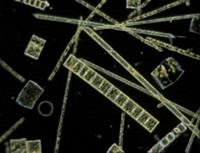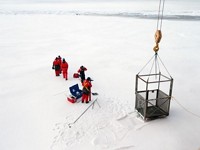Advertisement
Grab your lab coat. Let's get started
Welcome!
Welcome!
Create an account below to get 6 C&EN articles per month, receive newsletters and more - all free.
It seems this is your first time logging in online. Please enter the following information to continue.
As an ACS member you automatically get access to this site. All we need is few more details to create your reading experience.
Not you? Sign in with a different account.
Not you? Sign in with a different account.
ERROR 1
ERROR 1
ERROR 2
ERROR 2
ERROR 2
ERROR 2
ERROR 2
Password and Confirm password must match.
If you have an ACS member number, please enter it here so we can link this account to your membership. (optional)
ERROR 2
ACS values your privacy. By submitting your information, you are gaining access to C&EN and subscribing to our weekly newsletter. We use the information you provide to make your reading experience better, and we will never sell your data to third party members.
Environment
Warming Temperatures Alter Arctic Lake Biochemistry
Climate Change: Arctic ice's disappearance may encourage growth of sulfate-reducing bacteria that produce methylmercury
by Sara Peach
November 2, 2010

Rapidly rising surface temperatures in the Arctic have unleashed a cascade of changes to the region's ecology and geochemistry. Now Canadian, American, and European scientists have found that in high Arctic lakes, climate change may cause population growth in bacteria that reduce sulfate compounds (Environ. Sci. Technol., DOI: 10.1021/es101991p). This bacterial boom could lead to higher levels of methylmercury, a bioavailable form of the toxic metal.
Algae grow abundantly in some lakes once frozen year-round that now lose much or all of their ice during the summer. Paul Drevnick, an assistant professor of biogeochemistry at the University of Quebec, and his colleagues suspected that numbers of sulfate-reducing bacteria might skyrocket as they gobble the growing amount of dead algae.
To determine how climate change alters this biogeochemical cycle in Arctic lakes, Drevnick's team analyzed sediment cores from nine lakes in the Canadian Arctic and in Svalbard, Norway. The researchers proposed that, if sulfate-reducing bacteria numbers jumped as ice cover dropped, they should see increasing levels of inorganic sulfur over time.
They found exactly that: In eight of the study lakes, the amount of inorganic sulfur in the sediments had increased steadily since 1980. The scientists also determined that this sulfur accumulation closely tracked with temperature changes in the Arctic. This correlation suggests that a warming climate is driving this biogeochemical change, Drevnick says.
The sulfate-reducing bacteria are also known to transform inorganic mercury into methylmercury. As their numbers grow with warmer temperatures, concentrations of the toxic mercury compound may increase, Drevnick says. For decades, researchers have worried about rising mercury levels in Arctic animals, such as seals, beluga whales, and Arctic char. Methylmercury can bioaccumulate in these animals and disrupt their reproduction, development, and behavior.
To test the methylmercury link, Drevnick's team has begun new experiments with sediment samples collected from Cornwallis Island, Canada. They expect to have results next winter or spring.
Alan Werner, a professor of geology at Mount Holyoke College, points out that other culprits may contribute to increasing numbers of sulfate-reducing bacteria. Nutrient pollution, such as nitrogen pollution, from lower latitudes may float north and promote algal growth in the Arctic. But he says that the study's hypothesis seems plausible: "We see a lot of changes happening in the Arctic, and changes at a rate and scale that we have not seen before."




Join the conversation
Contact the reporter
Submit a Letter to the Editor for publication
Engage with us on Twitter